#verna aldrich
Explore tagged Tumblr posts
Text
The slur that Margot Asquith was friends with a lesbian dancer shadowed her reputation, but there were no subsequent trials. Maud Allan taught dance and lived with her lover Verna Aldrich, moving to Los Angeles and working as a draughtswoman for Macdonald Aviation.
"Normal Women: 900 Years of Making History" - Philippa Gregory
#book quote#normal women#philippa gregory#nonfiction#slur#margot asquith#friends#lesbian#dancer#reputation#maud allan#verna aldrich#teaching#dance#los angeles#drafting#macdonald aviation
1 note
·
View note
Photo

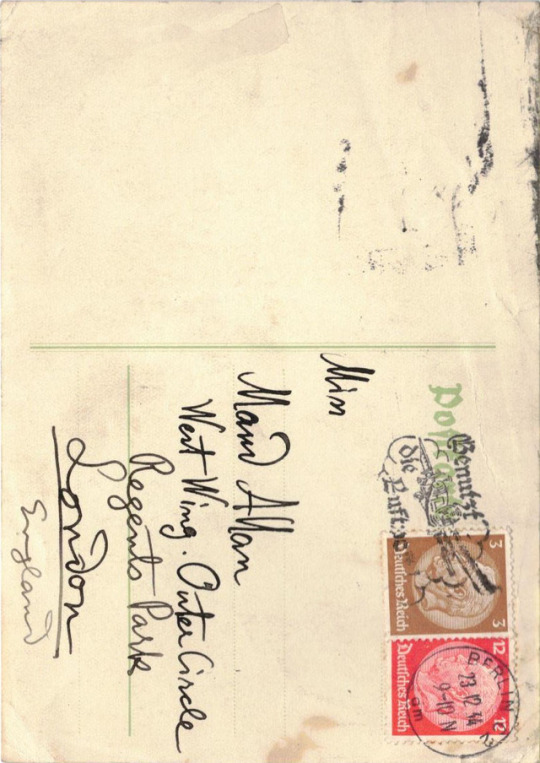
A hand-painted Christmas card from German painter/illustrator Otto Marcus (1863-1952), to Maud Allan (1873-1956).
Sent to Maud from Berlin, and postmarked 12-23-1934, by Otto Marcus – who had earlier painted a prize-winning picture of her, entitled Miss Allan, The Classical Dancer. Marcus’ daughter, Ruth Sendler, was also a professional dancer/choreographer.
The “Miss Aldridge” was Verna Aldrich, Maud’s long-time secretary/companion. From the address, we can see Maud was still living at West Wing, quarters that had originally been provided for her by Margot Asquith, wife of the Prime Minister.
15 notes
·
View notes
Text
The Star Packer 1934

#the star packer#john wayne#george gabby hayes#verna hillie#yakima kanutt#billy franey#eddie parker#earl dwire#thomas g lingham#davie aldrich#frank ball#george cleveland#arthur millett#artie ortego#tex palmer#glenn strange#westerns#western movies#western#westernmovies#western movie
23 notes
·
View notes
Photo
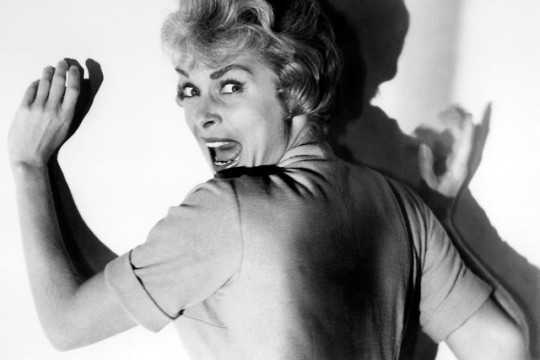
Horror.
Letterboxd presents our community’s 25 top rated horror films of all time.
With the release this month of the newest Halloween, and an embarrassment of riches in the form of thousands of new horror film reviews thanks to all the Hoop-tober / Shocktober / 31 Days of Horror challenges, we are feeling brave enough to open the crypt and pull out the Letterboxd community’s 25 Highest Rated Horror Films of All Time.
Don’t @ or stab us, these are computed from your ratings of all feature-length films tagged in our horror genre, as at 24 October 2018. It’s a wide-ranging list, with some perhaps surprising omissions—for example, the original Halloween, Night of the Living Dead and Evil Dead 2 all just missed the cut. See the full list or read on for data insights and member reviews of our highest rated horrors.
Strangling the numbers:
Though there is some genre crossover (into comedy with Young Frankenstein, mockumentary with What We Do in the Shadows and One Cut of the Dead, and zom-rom-com with Shaun of the Dead), these films are all categorized as horrors by us (and IMDb).
In the battle of great horror decades, the scary sixties wins with seven films, over five films from the slasher seventies and three from the evil eighties. Shout out to the terror twenties, with three films.
By country, USA has most films in the list, but Japan comes in strong second with four, Germany has three and France, Sweden and the UK are represented with two each. India, New Zealand and the Czech Republic also make the cut.
The most obscure film on the list (from a Western perspective) is Manichitrathazhu, from Kerala-born director Fazil, watched by just over 250 members.
All the directors are dudes. We can’t make any excuses for that, but we can point out that, behind-the-scenes and on-screen, women played important roles in these films. The Phantom Carriage, for example, is based on the novel by Sweden’s Selma Lagerlöf, who in 1909 was the first woman to win the Nobel Prize in Literature. And what would Jaws be without the editing prowess of Verna Fields?
There are five films on the list from this century, some by directors of color, including Jordan Peele, Jemaine Clement and Taika Waititi. Roll on the 21st century of horror.
On that note: this top 25 is based on member ratings, but we also have a popularity index—based on the sheer amount of activity for each film regardless of rating—which produces quite a different list, heavily favoring the 21st century.
Letterboxd’s 25 Highest Rated Horror Films (as at October 2018):

1. Psycho (1960, USA) Directed by Alfred Hitchcock
“Throughout his career, director Alfred Hitchcock has enriched the world of cinema with some truly groundbreaking thrillers and despite that, Psycho feels like something of a first from him. It’s his first stint with the genre of horror, it breaks through the barriers of censorship unlike any film before and over the years, it has played a major role in influencing not only films but pop-culture as well.” —CinemaClown

2. Alien (1979, USA) Directed by Ridley Scott
“When shit hits the fan it comes with the best first impression of any monster. PERIOD.” —TKettle

3. The Shining (1980, USA) Directed by Stanley Kubrick
“As soon as Jack Torrance is in frame, that uneasy feeling takes over. I feel as though I wish I could warn all of the other characters in the movie to walk on eggshells, don’t upset him! Maybe you shouldn’t talk to him right now! Can’t you see it! Just leave him alone! There has never been another character to give me such all-consuming anxiety.” —HollieHorror

4. The Thing (1982, USA) Directed by John Carpenter
“The man responsible for the movie’s stomach-churning physical effects deserves most of the credit for its appeal and success. Rob Bottin worked so hard he was hospitalized for exhaustion, pneumonia and a bleeding ulcer! And he was only 21 at the time! Pure underrated genius.” —Josh Stoddard

5. Rosemary’s Baby (1968, USA) Directed by Roman Polański
“I’m awestruck by how good this is. Every little detail from the very beginning means something and you really experience exactly what Rosemary experiences. Masterful spectatorship alignment.” —Sean Upton
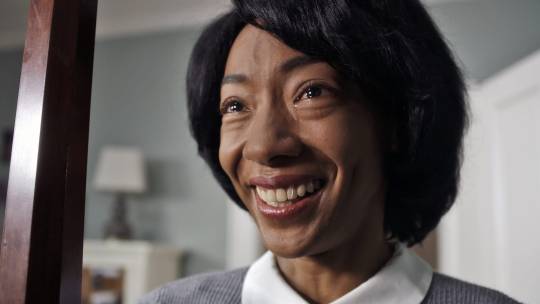
6. Get Out (2017, USA) Directed by Jordan Peele
“When you prod underneath the surface here there’s so much just waiting to be unpacked. As a piece of writing it’s a masterclass in foreshadowing and subtext.” —Alex Secker

7. Jaws (1975, USA) Directed by Steven Spielberg
“Bruce, the mechanical shark, still works today. Even with all the VFX-heavy films that are commonplace now, the shark is [as] scary and compelling now as it was in 1975. The camerawork is masterful, and it feels like films now are still trying to catch up to what was happening behind the camera on this movie.” —EJ Moreno
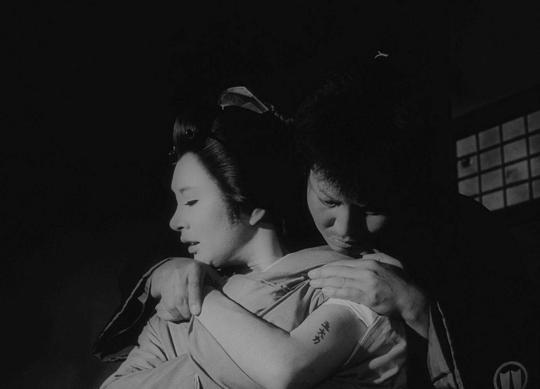
8. 修羅 (Demons) (1971, Japan) Directed by Toshio Matsumoto
“Matsumoto è stato uno dei più grandi innovatori del cinema giapponese e fonte di ispirazione di grandi registi del cinema mondiale. Quest’opera non fa che confermarne l’importanza e la genialità.”
Translation: “Matsumoto was one of the greatest innovators of Japanese cinema and a source of inspiration for great world cinema directors. This work confirms his importance and genius.” —Tonino Mannella
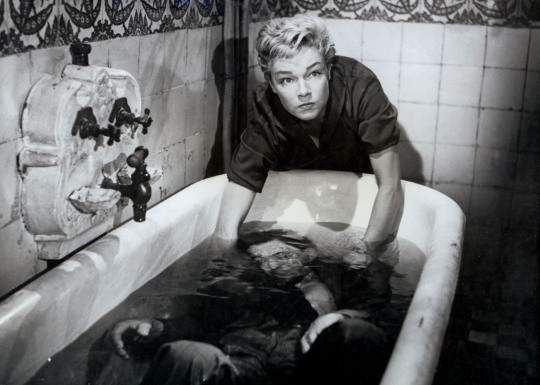
9. Les Diaboliques (Diabolique) (1955, France) Directed by Henri-Georges Clouzot
“It was extremely suspenseful and you can see how this film had such a huge impact on Hitchcock when he made Psycho… Five out of five overly dramatic heart attacks.” —Libby Ajayi
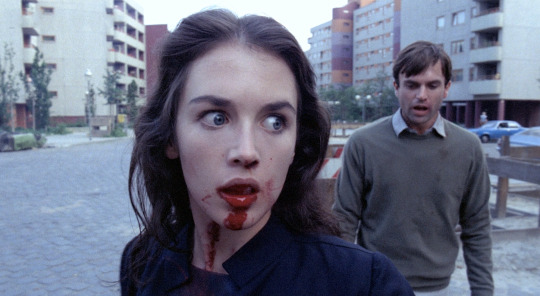
10. Possession (1981, Germany, France) Directed by Andrzej Żuławski
“Ana’s spectral screams as she flows and dances like a ghoul in the subway. All I could do was cry at it, with her, for her.” —Claire Diane
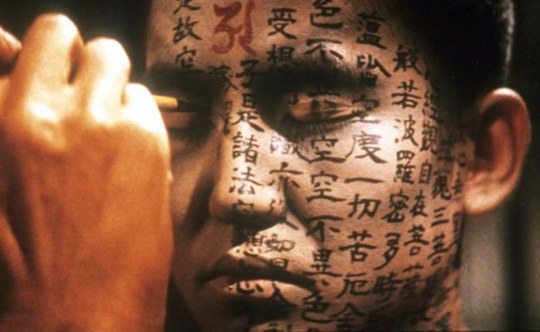
11. 怪談 (Kwaidan) (1964, Japan) Directed by Masaki Kobayashi
“Every frame of this movie is a piece of art… To ask for more would be greedy.” —Gabe
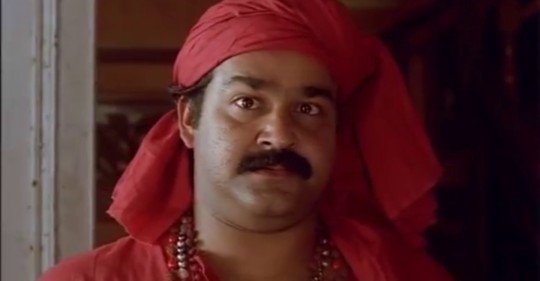
12. മണിച്ചിത്രത്താഴ് (Manichitrathazhu) (1993, India) Directed by Fazil
“Perhaps the most popular film to come out of Kerala in this generation. The screenplay, the performance, and the plot are worth a study in [themselves]. Fantastic package of thrilling entertainment and storytelling.” —Vinay Warrier

13. Whatever Happened to Baby Jane? (1962, USA) Directed by Robert Aldrich
“Normally my heart really aches for ‘crazy’ characters who have been brutalized by the concept of womanhood but… it’s very hard for me to feel bad for Baby Jane.” —Caroline
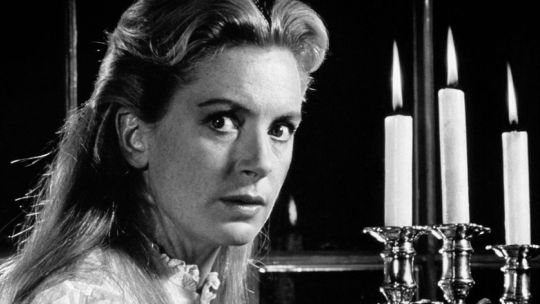
14. The Innocents (1961, UK) Directed by Jack Clayton
“Exquisite and captivating… it’s the only movie I’ve watched this Hooptober that has genuinely scared me. Squirming, nail biting, chills down the back, all of it.” —Xebeche

15. Låt den rätte komma in (Let the Right One In) (2008, Sweden) Directed by Tomas Alfredson
“Deep down, it’s just a story about human misunderstanding, but it is gracefully put together to give you a thrilling ride that will make you root for an evil you’re not really sure is there. It makes you question your moral standards and puts you in a nice grey area.” —Charlie Bluu

16. カメラを止めるな! (One Cut of the Dead) (2017, Japan) Directed by Shin'ichirô Ueda
“The film starts as a Z-list zombie movie and looks cheesy as hell, but when we discover we are watching more of a mockumentary of this film being made and the director on the verge of a breakdown, the fun really begins. The first 37 minutes are completely one cut… one cut, that actually blows my mind.” —Coles84
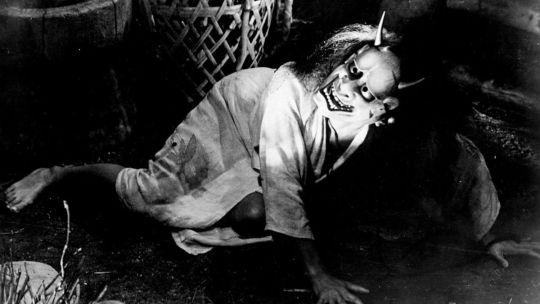
17. 鬼婆 (Onibaba) (1964, Japan) Directed by Kaneto Shindō
“In good ol’ black and white, Onibaba is a visually stunning erotic horror film painted in deep shadows and flesh… it’s less a ghost or monster tale and more of a morality play about the passions and desperation that arise in splintered, war-torn communities, and how no matter what we fear, we are ultimately our own demons. Creepy, sensual and effective.” —Doug Bellak

18. Das Cabinet des Dr. Caligari (The Cabinet of Dr. Caligari) (1920, Germany) Directed by Robert Wiene
“From Murnau’s Nosferatu and the American noir of the 1940s, to contemporary horror films and every piece of work where Tim Burton asks Johnny Depp to dab black around the actor’s eyes, the influence of Wiene’s film can be felt… it is the stuff of nightmares that still has power nearly a century after it was made.” —Travis Lytle
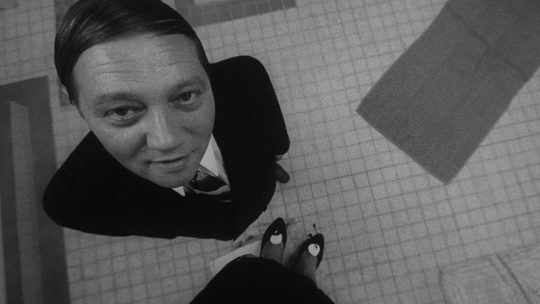
19. Spalovač mrtvol (The Cremator) (1968, Czechia) Directed by Juraj Herz
“I find it hard to fathom a film as stylish and mesmerizing as this is, 45 years old! It was obviously way ahead of its time! The cinematography is as captivating as the film is deliciously macabre!” —Juli Norwood

20. The Exorcist (1973, USA) Directed by William Friedkin
“The Exorcist remains one of the greatest achievements of the horror genre. The things they were able to accomplish with sound mixing at the time have yet to be outdone. The makeup department deserves a heap of credit, and the effects still look great. Acting is something that typically gets sacrificed in most horror movies, but this is one exception where every actor delivers a quality performance.” —Sean

21. Körkarlen (The Phantom Carriage) (1921, Sweden) Directed by Victor Sjöström
“It was not for nothing that Selma Lagerlöf became the first woman to get the Nobel Prize. She’s a great storyteller, and there’s a melody in her writings that is hard to not get sucked into… Victor Sjöström has really understood the tone of the novel and the music that comes with it is in tune with the melody of Lagerlöf's writings.” —Terése Flynn

22. Faust – Eine deutsche Volkssage (Faust) (1926, Germany) Directed by F. W. Murnau
“I watch this, and cannot fathom how this one man could make the cinematic medium look so relentlessly groundbreaking in its mere infancy. It’s obscene that he died so young… in a sense, Faust’s quest for the ur-truth becomes Murnau’s own quest for his own epic cinema: one that maximizes the potential for awe at every turn, leaving behind mundane methods for totalizing ones.” —Darkness Lingers
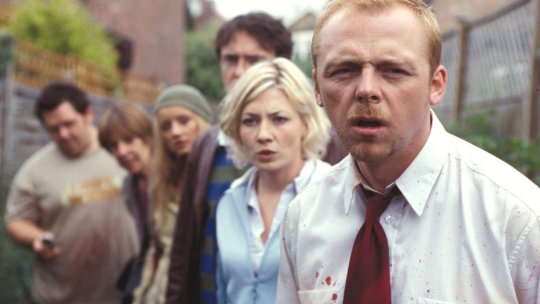
23. Shaun of the Dead (2004, UK) Directed by Edgar Wright
“I understand tossing Batman when your other options are [Prince’s] two biggest contributions to the world of music, but it still saddens me that Shaun and Ed so carelessly tossed away a truly undervalued record. Perhaps, we all do crazy things when we’re trying to survive.” —Willow Maclay
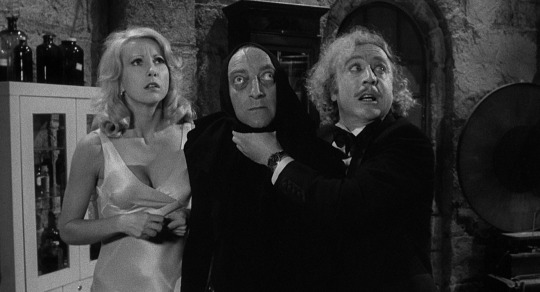
24. Young Frankenstein (1974, USA) Directed by Mel Brooks
“When Mel hits, he hits big… [he] may not employ nuance often, but he’s got broad comedy and wordplay down pat, and some of his best examples of this are in Young Frankenstein.” —Joe Campbell
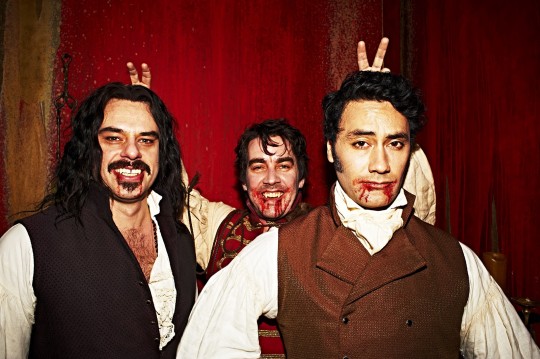
25. What We Do in the Shadows (2014, New Zealand) Directed by Jemaine Clement and Taika Waititi
“An absolute must-watch for fans of horror comedy, horror, vampires, brilliant comedy in general, and great improvization. According to their IMDb trivia, Taika Waititi, Jemaine Clement and co. shot over 125 hours of improv for this film before finally whittling it down to 90 minutes of the best stuff.” —Voidember
Right. Now that that’s all done with, we are ready to go into town and party.
#highest rated#horror#horror films#25 highest rated horror films#psycho#alien#what we do in the shadows#alfred hitchcock#letterboxd#best of
68 notes
·
View notes
Link
Studies have shown that people who follow the recommended daily intake of protein can lose more weight than those who don’t. We’ll look at how incorporating protein into each meal and snack can help you take off the pounds.
1. Protein Controls Your Appetite
Your body requires large doses of protein, fat, and carbohydrates for survival. Of these macronutrients, protein keeps you full the longest. Studies show a high-protein diet increases leptin activity. Leptin is the “satiation hormone.” It tells your brain you’ve got plenty of stored fuel and keeps you from overeating.
Leptin is instrumental in weight management. When you continue to feel full, you’re less likely to go back for seconds at mealtime, pick between meals, or cheat on your diet. Eating less over time will help you lose weight.
A high-protein breakfast is particularly useful. It’ll keep you full longer and curb your appetite throughout the day. And, at each meal and snack, eat your protein source before the carbohydrates and fats.
2. Protein Reduces Cravings
Ghrelin is another appetite hormone that affects your eating behavior and weight loss efforts. Known as the “hunger hormone,” it tells your brain you’re hungry, and it’s time to eat. Dietary protein reduces ghrelin levels and keeps hunger at bay.
Although carbohydrates cause ghrelin to decline rapidly, making you full soon after eating, ghrelin levels rebound soon after. As a result, you’re hungry again in no time. After a high-protein meal, ghrelin gradually declines and does not rebound, keeping you satiated longer.
3. Protein Burns Calories to Process
The thermic effect of food is the calories needed to digest that food into small, absorbable components. Each of the macronutrients, carbohydrates, fat, and protein have different thermic effects.
Protein’s thermic effect is higher than that of carbohydrates and fats. Although studies vary, most conclude that your body burns off 20-30% of protein’s calories through its digestion, absorption, and transport. The carbohydrate thermic effect is only 5% to 10%, and that of fat is even lower, at 0% to 3%.
While you shouldn’t replace carbs and fats with protein for its thermic effect alone, the extra calories burned with protein will help with your weight-loss efforts.
4. Protein Manages Blood Sugar Levels
After a meal rich in simple carbohydrates, your blood sugar spikes and insulin kicks in to make sure your blood sugar doesn’t go too high. This rapid rise in blood sugar and its insulin response leads to a dip in blood sugar, making you hungry again soon after you’ve eaten.
Protein can curb the spikes in blood glucose and insulin, preventing the corresponding dip, and keeping you full longer.
As we’ve seen with the hormonal response to protein and protein’s thermic effect, replacing simple carbohydrates and fat with protein sources will keep hunger at bay. You’ll eat less and lose weight.
5. Protein Burns Extra Calories With Strength Training
A high-protein diet combined with strength training burns even more calories, contributing to weight loss.
When you work your muscles against resistance, you create micro-tears in your muscle fibers. Dietary protein not only helps to repair those tears but to strengthen and grow your worked muscles. This muscle recovery process requires energy in the form of calories.
This new muscle gained through training is metabolically active, which means it continues to consume calories for as long as you have it. The more muscle you gain through strength training, the more calories you burn to maintain it.
Conclusion
Incorporating great quality protein like PCN complete plant protein, into a balanced diet is an easy and effective weight-loss tool. It helps control your appetite, reduce cravings, manage blood sugar and burn extra calories.
Sources
Aldrich, Noel D., Courtney Perry, William Thomas, Susan K. Raatz, and Marla Reicks. 2013. “Perceived Importance of Dietary Protein to Prevent Weight Gain: A National Survey among Midlife Women.” Journal of Nutrition Education and Behavior 45 (3):213-21.
CSIRO. 2018. “Is Breakfast Protein the Secret to Weight Loss?,” January. CSIRO. http://ift.tt/2Iaswu8.
Izadi, Vajiheh, Sahar Saraf-Bank, and Leila Azadbakht. 2014. “Dietary Intakes and Leptin Concentrations.” ARYA Atherosclerosis 10 (5):266-72.
Jakubowicz, Daniela, Oren Froy, Julio Wainstein, and Mona Boaz. 2012. “Meal Timing and Composition Influence Ghrelin Levels, Appetite Scores and Weight Loss Maintenance in Overweight and Obese Adults.” Steroids 77 (4):323-31.
Tappy, L. 1996. “Thermic Effect of Food and Sympathetic Nervous System Activity in Humans.” Reproduction, Nutrition, Development 36 (4):391-97.
Weigle, David S., Patricia A. Breen, Colleen C. Matthys, Holly S. Callahan, Kaatje E. Meeuws, Verna R. Burden, and Jonathan Q. Purnell. 2005. “A High-Protein Diet Induces Sustained Reductions in Appetite, Ad Libitum Caloric Intake, and Body Weight despite Compensatory Changes in Diurnal Plasma Leptin and Ghrelin Concentrations.” The American Journal of Clinical Nutrition 82 (1):41-48.
The post 5 Ways Protein Can Help You Lose Weight appeared first on Pure Charge Nutrition.
via Pure Charge Nutrition
0 notes